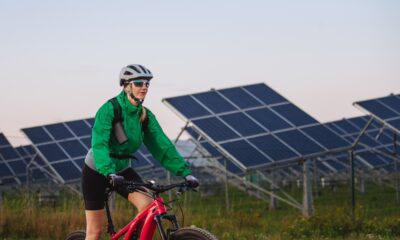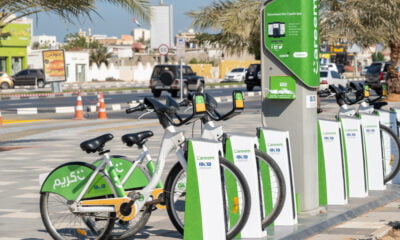

Sustainability
How to Travel More Sustainably While Saving Money
We recently shared an article on the best tips for eco-tourists in 2023. One of the many factors that you have to consider is traveling sustainably while flying.
Aviation has disrupted human travel. You can zip across the state to have a coffee and head back home right after, hit the skies to avoid a boring drive, or flip a coin when you can’t decide which continent to travel to. Everything is possible thanks to the brilliant minds behind the concept of the modern airplane and to George Cayley – known as the father of aeronautics.
As wonderful as it can be to get anywhere in the shortest time possible, it comes with a price. Flying comes at the bottom of the list of environmentally friendly means of transportation. The aviation sector is responsible for an estimated 2.4% of total world carbon emissions, most of which come from commercial travel. But even though airlines are primarily responsible for reducing their CO2 emission, you can, too, become a more sustainable traveler.
Contributing to a greener tomorrow doesn’t take much effort; needless to say, you can also save on your trips while being more eco-friendly. The seven tips below will help you achieve both in no time.
Use eco-friendly airports and airlines
Regarding flying sustainability, airlines aren’t created equally, nor are airports. Several air companies known for employing more eco-friendly practices are JetBlue, KLM, United Airlines, American Airlines, and Delta Air Lines, among others.
Authorities at some of the busiest airports worldwide understand the need to transform their airports and set an example, as many examples prove. JFK Airport’s terminal four, for instance, is the first airline terminal in the US to be awarded a LEED platinum recognition. The whole airport focuses and sustainable growth and is one of the top performers in energy management. Even though the thought that more than 15 million passengers used this airport in 2021 might seem daunting, there are ways to facilitate your experience. You can skip the part where you worry about a parking lot by using a platform that helps you find the best parking spot. If you’re going to support environmentally-friendly airports, compare parking facilities at JFK airport on parkos.com. You can make a reservation and pay in advance, saving time and money you’d spend on pricy parking lots while avoiding the airport hassle.
Choose the eco-friendly luggage
The eco-friendly travel luggage goes the extra mile for sustainability as they’re not made with all the chemicals the traditional suitcase uses. They put recycled material to good use and can reduce the content of bags if you’re willing to bring your reusable bags.
Some airlines provide their own lines of luggage made out of recycled materials, and you can check this detail before deciding on an airline in order to fly green. Also, don’t leave your eco-friendly items like the reusable water bottle at home.
You can also reduce the size of your bag, as the bigger the load, the more energy the airplane consumes.
Fly in Economy Class
Flying economy class means less CO2 per passenger, equating to more sustainable flying. On the other hand, business and first-class contribute to a much larger carbon footprint, partly owing to the more spacious seating. The number of passengers on an airplane can increase if there are fewer seats in the first and business class.
It might feel fancy to be greeted with champagne, but it won’t help you achieve your sustainable goal. There are other ways to enjoy a more relaxing trip; for instance, with parking Newark airport, you can have a stress-free drive to the airport, leave your car here until you return, and keep your mind at ease, knowing your vehicle is protected while you’re away.
Decrease your day-of impact
Your flight makes for most of your CO2 emission, but you can still take steps to minimize your day-of impact. You can, for instance, choose a plant-based meal option instead of an in-flight pot roast, decreasing your overall emissions for the day.
Other actions you can take include bringing reusables and going paperless. The latter means you’ll download a digital ticket instead of choosing the paper boarding pass. Its planetary cost is insignificant, but it starts to make sense when you think how many millions of passengers the global airline industry serves a day.
Fly with a low-cost airline
Low-cost or ultra-low-cost airlines are a godsend for budget-travelers and better for the environment, too, typically because they make the best use of aircraft space and offer more economy class seats, but also due to the unbundling of fares. You’ll only have to pay for what you want, like checked baggage, beverages, and meals, resulting in less weight on the plane, reduced waste, and improved fuel efficiency.
Fly directly with a non-stop flight
A non-stop flight is from one airport to another, having no stops between departure and destination. You won’t be able to visit another city, which means you can get faster to your destination. These types of flight result in lower CO2 emissions and less fuel, but they also save you a considerable amount of time (and money, if you were to treat yourself in any way on the stops along the way).
Lower window shades
There are things you can do to minimize your environmental impact while you’re on the plane, like reducing the window shades. This practice keeps the plane cooler, meaning it will spend less energy to power the air conditioning system that cools the plane. The total energy required is cut, just like the greenhouse gas emissions in the atmosphere. A plane’s temperature could be decreased by 10°C if every window shutter was closed.
Last words
As the world recognizes the need for more environmentally conscious practices, companies and the average traveler are paying more attention to sustainable flight. Over 80% of travelers worldwide approved of the importance of sustainable tourism in 2022, while in 2020, around 39% of travelers surveyed revealed they started to consider travel sustainability more.
If you want to conserve natural resources and improve the quality of your life, don’t just limit yourself to sustainable living practices, but choose to make a difference when traveling, too.


 Environment10 months ago
Environment10 months agoAre Polymer Banknotes: an Eco-Friendly Trend or a Groundswell?

 Environment11 months ago
Environment11 months agoEco-Friendly Home Improvements: Top 7 Upgrades for 2025

 Features9 months ago
Features9 months agoEco-Friendly Cryptocurrencies: Sustainable Investment Choices

 Features10 months ago
Features10 months agoEco-Friendly Crypto Traders Must Find the Right Exchange






























